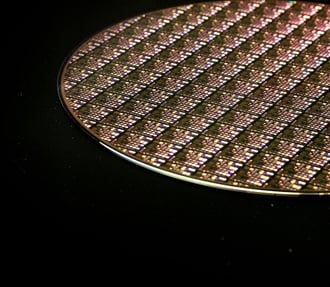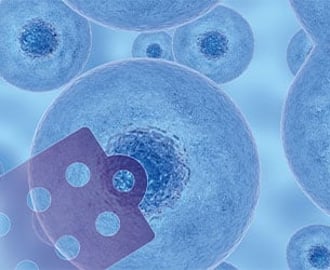Discover how Atomic Force Microscopy (AFM) is revolutionizing industries by providing unparalleled insights into ...

22.10.2024
The ultimate tool for nanoscale research from biological molecules to advanced new materials.
The versatile mid-range research AFM that grows with your demands in modes and accessories.
A compact affordable research AFM that is astoundingly easy to use, with more than 30 modes and options.
Measure roughness and other material properties of heavy and large samples up to 300 mm and 45 kg.
Bringing the power of DriveAFM to a wafer metrology system purpose-built for the requirements of the semiconductor industry.
For unique requirements, we will design a bespoke AFM solution, leveraging our decades of engineering expertise.
Slide an AFM onto your upright optical microscope turret for a leap in resolution.
One of the smallest ever AFMs, created for integration into custom stages or existing setups.
A flexibly mountable research-grade scan head for integration into custom stages or existing set ups.
What is atomic force microscopy (AFM)? How does AFM work? What AFM modes do I really need? How do I get started with AFM?
Learn how AFM works with cantilever/tip assembly interacting with the sample. Explore CleanDrive technology, calibration methods, and feedback principles for precise nanoscale imaging.
An overview of common AFM modes. To learn about each mode in more detail and see application, view the full article.
We regularly publish detailed reviews providing practical guidance and theoretical background on various AFM applications.
Read detailed technical descriptions about selected AFM techniques and learn how to perform specific measurements on Nanosurf instruments.
A library of links to research papers in which Nanosurf instruments were used.
Learn AFM from our library of recorded webinars, covering different measurement techniques, modes, and areas of application.
Short video clips explaining how to perform different operations on Nanosurf instruments.
Watch a product demonstration to learn about the capabilities of our AFMs.
Short videos of our AFMs.
Browse news articles, press releases and a variety of other articles all around Nanosurf.
Browse Héctor Corte-Léon's weekly experiments, for inspiration, entertainment, and to discover everyday applications of AFM.
How important are calibration samples? How frequently should we use them?
Atomic Force Microscopy (AFM) is a versatile technique that allows researchers to explore and characterize surfaces at the nanoscale. However, to ensure accurate and reliable results, calibration of the AFM system is crucial. Calibration samples play a vital role in both troubleshooting unexpected imaging issues and achieving precise measurements. In this article, we discuss the significance of calibration samples, their various types, and the frequency of calibration.
Troubleshooting and System Validation
Calibration samples serve as valuable tools for troubleshooting unexpected results or imaging issues in AFM. By comparing the obtained imaging results with the known structure of calibration samples, researchers can identify if the problem lies with the sample preparation or the AFM system itself. Calibration gratings with well-defined structures are particularly useful for this purpose. Any deviations observed in the imaging results can indicate for example a system malfunction or miscalibration, prompting further investigation and adjustments.
Precise Measurements and Accuracy
Accurate calibration is essential for obtaining precise measurements in AFM. Various types of calibration samples are available, including some with certified dimensions. While certified calibration samples are more expensive, they offer higher accuracy and are well-suited for applications that demand the utmost precision. These samples provide a reliable reference to ensure the accuracy of the dimensions measured in AFM images.
During system calibration at the factory, certified calibration samples are typically used to directly calibrate the AFM scanner or to cross-validate the calibration obtained from interferometric measurements.
The frequency of system re-calibration depends on the AFM system and its design. For systems equipped with electromagnetic scanners, like Nanosurf’s FlexAFM, linearity is inherent, and aging effects are minimal. Such systems hardly require calibration in the field. Additionally, systems equipped with position sensors such as Nanosurf’s DriveAFM typically do not require calibration as the position feedback ensures accuracy.
However, AFM systems with open-loop piezo scanners may be susceptible to aging effects of the piezo material over time. In such cases, more frequent calibration or regular checks of calibration are recommended to maintain measurement accuracy. Understanding the specific requirements of your AFM system and consulting the manufacturer's guidelines will help determine the appropriate calibration frequency.
In summary, calibration samples play a critical role in AFM imaging and measurement accuracy. They provide valuable insights to troubleshoot unexpected results and serve as a benchmark for validating the performance of the AFM system. Calibration samples with certified dimensions offer higher accuracy, but whether or not to use them depends on the specific needs of the application in question.
For a deep dive on calibration, check out Session 6 of the Nanosurf AFM Master Class.
Find answers to more of your questions on AFM in our FAQ download.

22.10.2024
Discover how Atomic Force Microscopy (AFM) is revolutionizing industries by providing unparalleled insights into ...

09.09.2024
Explore the strengths and limitations of Atomic Force Microscopy (AFM), Scanning Electron Microscopy (SEM), and ...

29.11.2023
Discover how Nanosurf's collaboration with a team of scientists has revolutionized spring constant calibration for ...

11.07.2024
FridayAFM: learn how to perform datamining on large sets of AFM data.

02.07.2024
FridayAFM: learn how to automatize data analysis in MountainsSPIP

26.06.2024
FridayAFM: learn how AFM makes possible modern ball point pens.
Interested in learning more? If you have any questions, please reach out to us, and speak to an AFM expert.
